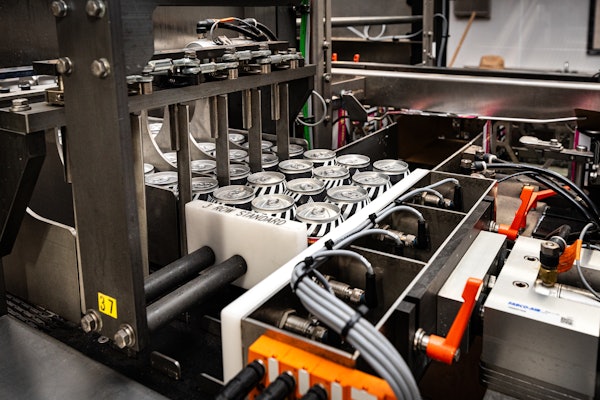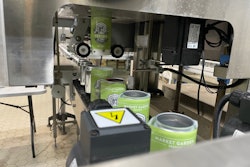Part I of this two-part series (Packaging Insights, 5/8/17) focused on pallets, emphasizing that any load that’s built on a defective pallet is inherently susceptible to collapse.
With Part II we focus on corrugated cases and also on ways of securing them to pallets. Because even with a top-quality pallet, defects in the cases and/or how they are secured increases the probability of a pallet load collapsing.
Corrugated cases are produced to specifications detailing their various properties. The Edge Crush Test (ECT) rating is regarded as a measure of stacking strength, at least in theory. Without knowledge of the intricacies of ECT ratings, however, shippers might operate under a false sense of security. It’s useful, for example, to understand that converting a Bursting (Mullen) Test rating to an “equivalent” ECT rating provides modest reliability, at best. The reason is two-fold: 1) the resulting ECT rating is a minimum value; and, 2) corrugators don’t all use the same formulation in making corrugated board to that given ECT rating.
An ECT rating is one of performance, begging the following question: performance under what assumed conditions? Without a reliable answer, the result is likely to be over-performance or under-performance--each costly--rather than cost-effective performance. It’s a logistics issue, requiring that shippers know the reasonably foreseeable conditions that the cases must endure. Such knowledge can be gained not only from laboratory tests, but also from shipping tests, inputs from supply chain members, and modeling.
Properly-specified cases are a fundamental requirement in reducing occurrences of collapsing pallet loads. But if in-house practices subject the properly-specified case blanks to improper handling, storage, and set-up, problems are likely to occur.
If all has gone well through the filling and closing of the cases, the next major point of concern is the arrangement of the cases onto a pallet. The two most common types of stacking patterns are columnar and interlocked.
All other factors being equal, columnar stacking provides greater stacking strength, because the corners of each upper case are aligned with the corners of the one below it. A fact learned in childhood, playing with building blocks, is that columns can topple, a propensity that increases with the height of the column.
Again with all other factors being equal, interlocked stacking provides greater stability, in terms of retention of shape, because of the laid-brick pattern. On the other hand, there is a reduction in stacking strength because corners are not aligned.
Loads collapse due to having toppled. Loads collapse due to having come apart. Guarding against one can result in a sacrifice in the other. As with most, if not all, packaging-related decisions, the choice of stacking pattern should be application-specific.
Canned goods and other contents that lend compressive strength to the case make an interlocked pattern justifiable; even then, it should be kept in mind that there are a myriad of possible interlocking patterns (and case dimensions for a given cubic volume) that affect load stability.
In contrast, lightweight, low-density contents rely on the case to provide compression strength, thereby favoring columnar stacking; however, on the debit side, such contents typically result in tall loads (to best utilize the load-bearing capacity of the pallet), increasing the susceptibility to toppling.
The previous examples bookend a wide middle wherein combining columnar and interlocked stacking patterns might be feasible. In such instances, the lowermost tiers should be column-stacked for compression strength and the uppermost tiers interlocked for stability. Such hybrid loads, however, can present a challenge for robotized operations programmed to build in accordance with a single pattern.
Regardless of stacking pattern, a condition that always compromises the compression strength is pallet overhang, that is to say, portions extending, unsupported, beyond the deck of the pallet. The resulting unevenness of resistance to compression compromises not only stacking strength (the forte of columnar stacking) but also load stability (the forte of interlocked stacking). Most often, overhang is committed intentionally, to get better coverage on the pallet, the belief being that an inch or two overhang isn’t a concern. That’s an unwise generalization. Overhang can be a direct cause of collapse, if not in the short-term, then in the long-term.
Granted, what constitutes short-term and long-term is relative. The point to be made is that they should be defined from an individual perspective. This dovetails into a discussion of creep, the measure of the ability of corrugated to endure a constant compression, over a specified period, without collapse. The longer a load is anticipated to remain in the supply chain before being disassembled at final destination, the greater the need for resistance to creep. This is true even for loads that don’t have overhang.
Cases need to be secured to pallets, a function most commonly performed by stretch wrap. Among the many considerations attendant to stretch wrap are: cast film vs. blown film; gauge; width of the web; how far below the pallet deck the wrapping starts; the amount of overlap of the spiraling; and whether the stretch-wrapping machine performs pre-stretch. All that said, stretch wrap is just plastic film, subject to rupture by a variety of causes, and should not be considered an exemption from benchmark practices in handling, transportation, and storage.
Not that stretch wrap, alone, can’t provide sufficient securement, but strapping lends an added measure. For most consumer, non-durable goods, plastic strapping (as opposed to metal) will suffice. Plastic strapping comes in polypropylene and polyester (and in less use, nylon), differing in the key characteristics of elongation (the ability to stretch without breaking) and recovery (the attempt of the elongated strapping to return to its original length). Elongation and recovery determine how tightly the strapping can be applied and how likely it is to remain tight.
Polypropylene is an economical choice for light-to-medium-duty loads. Polyester, slightly pricier, is better suited for heavier-duty loads, particularly when a replacement for steel strapping is sought. Independent of the type of plastic, strapping typically is applied two lengthwise and two widthwise (assuming a 48 x 40 inches pallet).
Incidentally, whether a machine applies strapping or stretch wrap, or whether it palletizes, the machine should be calibrated daily and checked on a schedule, such as the beginning of every 8-hour shift, to best assure consistency in load integrity.
A load that is properly assembled has the best chances against collapse, avoiding the associated costs in merchandise as well as in human injury. Achieving that objective requires a multitude of work, which together constitutes a load in itself.
_________________________________________________________________________
Sterling Anthony, CPP, is a consultant specializing in packaging, marketing, logistics, and human-factors. His contact information: 100 Renaissance Center, Box-176, Detroit, MI 48243; telephone 313-531-1875; [email protected]; www.pkgconsultant.com

























